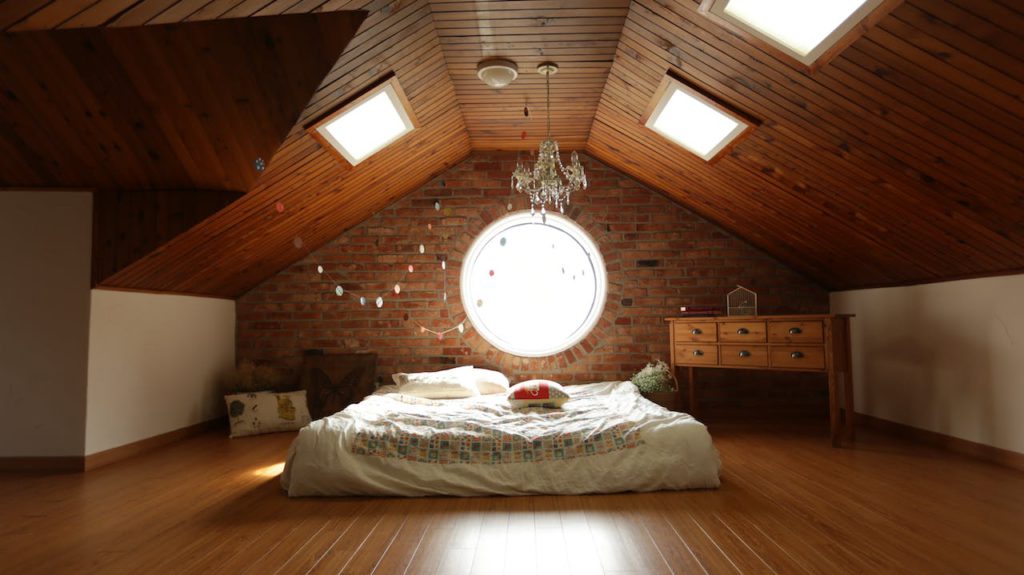In the world of woodworking, there comes a time when you need to consider the right finish for your project. Whether you’ve built a brand new decking out back or have repurposed a family heirloom, several wood finishing techniques and products will enhance and protect your creation. While you may appreciate the raw qualities of your work, it’s essential to safeguard your timber from damage and deterioration. Applying a finish can also accentuate the wood’s natural grain and colouring.
If you’d like to master the art of wood finishing, consider the following options:
Stains
Wood stains are a versatile and aesthetic choice. They offer several protective benefits, including rot prevention and sun and moisture protection. While they can prolong your timber’s lifespan, wood stains are often chosen for their visual appeal and colour flexibility. Their translucent coating can enhance the timber’s natural wood grain and allow you to select or accentuate a hue. From light tints to deep, rich colours – you can customise the look of your wood to your liking.
Before applying your stain, there are a few factors to consider:
Type of Wood
The type of wood you’re staining can make all the difference when choosing your product. Some woods will absorb and hold the stain well, while others may not.
The top woods to stain include:
- Oak
- Cedar
- Ash
- Hickory
- Chestnut
Whether staining a cabinet or a decking, it’s wise to ensure the wood type is appropriate for the applied product to achieve the finest results.
Level of Transparency
Wood stains come in various levels of transparency, including transparent, semi-transparent, and opaque. Clear colours accentuate the wood’s natural grain, while semi-transparent stains add colour while preserving some grain visibility. Solid colours, on the other hand, provide a uniform, opaque colour, hiding the wood’s grain.
Colour Choice
Choosing your stain’s colour will impact your project’s overall aesthetic. Are you looking to accentuate the natural hue of your timber or add a little more warmth? For a slick, sophisticated finish, you may even prefer a cooler, contemporary tone, such as grey. If you’re after a bold, statement stain, you might consider drawing inspiration from Japan and opt for a Black Japan stain. Perfect for your back decking, indoor staircase, and even your timber screens – this stain includes clear polyurethane for a beautiful, long-lasting finish.
Application
When mastering any art, you need to decipher the best application method. For stains, you may choose the brushing, wiping or spraying technique – depending on what look you’re going for. Once completed, applying an oil or varnish is recommended to protect your work and give it a more specific finish – glossy, satin, or matte.

Oils
Wood oils are considered ‘penetrating finishes’ as they seep deep into the surface of the timber, achieving a more natural look. Some oils glow warm, while others accentuate the wood’s natural beauty. Certain oils are better for some purposes than others. For kitchen worktops and utensils, you may choose a food-safe option, such as Danish oil.
Here are the top traditional wood oils to review:
Danish
- Highly versatile
- Water-resistant
- Food safe when dried (always check ingredients)
- Ideal for wooden kitchen utensils, handles, and worktops
- Dries to a hard, satin finish
- Easy to maintain
Tung
- Flexible
- Durable
- Food safe when dried
- Mould-resistant
- Doesn’t darken
- Ideal for boat decks, floors, interior and outdoor furniture
- Dries to a matte or light satin with a slight golden tint
Teak
- UV-protection
- It can be used on softwoods and hardwoods
- Prevents drying, warping, splitting, deterioration
- Easy to apply and fast-drying
- Ideal for exterior wood, including outdoor furniture
- Dries to a natural matte finish
Linseed
- Enhances and restores interior wood
- Creates a warm, yellow glow that darkens over time
- More difficult to apply
- Ideal for interior wood and cricket bats
- Dries to a matte finish
Cedar
- Increases the lifespan of the furniture
- Resistance to insects, disease, and rot
- Natural look
- Ideal for floor polishing and furniture
Varnishes
Compared to wood oils, varnishes require less maintenance and can increase durability. They are also more water, heat, solvent, and chemical-resistant. While you may love the natural look that oils are known for – due to deep wood seepage – varnishes create another layer on top of the timber, sealing the wood properly to avoid grease marks and other damage.
Types of Varnishes
- Oil-based varnish is often made of a mixture of drying oil and resin, providing excellent durability and a warm, golden finish. These oils also enhance the natural grain of the wood. Perfect for high-traffic surfaces like tabletops and floors, oil-based varnish offers premium protection against wear and tear.
- Water-based varnishes are more eco-friendly and emit fewer fumes than oil-based ones. They dry faster and provide a clear, non-yellowing finish, making them ideal for light-coloured woods.
- Polyurethane varnish is known for its rock-hard finish and is incredibly durable and resistant to water, chemicals, UV radiation, scratches, and heat. They come in both oil and water-based formulas. You can expect a glossy, smooth finish when using this type of varnish.
There are several different varnish finishes, depending on your desired look and level of glossiness:
- Gloss: 70-80% sheen level
- Satin: 41-69% sheen level
- Matte: 1-9% sheen level
Waxes
Wax finishes are perfect for extending the lifespan of your timber flooring and furniture against general scratches and scuffs. They are also known for adding elegance to your woodwork. There are several choices depending on your project, whether soft, sticky beeswax, a complex, natural carnauba wax, or a soft, slippery paraffin or canning wax.
Beeswax, for example, is more suitable for polishing, whereas carnauba is ideal for a more protective finish. Made from premium, natural carnauba – hard wax is the perfect choice to restore old, worn timber – especially furniture. It acts as a vital medium, protecting against water damage. It can also enhance the natural look of your wood and offers a beautiful yet natural sheen.
Waxes can come in various hues, including clear, white, amber, and warm wooden tones – enhancing the timber’s natural aesthetic. Depending on your preference, polishes can go in paste, liquid, and solid stick forms.
Wood and Timber Wax Advantages
- Enhanced protection
- Accentuates the wood’s natural beauty
- Environmentally-friendly
- Easy to apply and forgiving
- Moderately acid-resistant
- Mildly water-resistant
- Prevent warping and rotting
- Non-toxic
While waxes offer many benefits, it’s wise to look into the specifications of your wax product to ensure it’s the right fit for your project. Polishes must also be applied by hand, which requires more physical effort than other wood finishes.
If you’d like to master the art of wood finishing, you need to understand the type of timber you’re using and what it requires to live a long life. If practicality is at the forefront of your project, you may need a water-resistant finish that protects against high traffic. To make a statement with your brand-new decking, you may look into coloured options like stains. Or maybe you’re sprucing up an ol’ heirloom and need a simple yet durable oil or wax. Each presents its benefits and specialities, ensuring your project dresses to impress.

